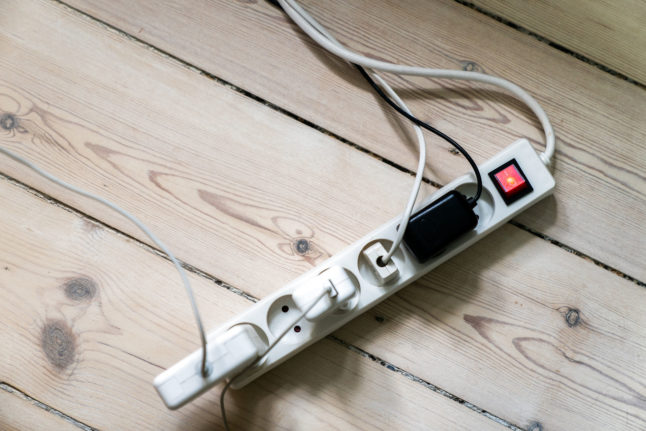Because of high energy prices, many people across Denmark face expensive electricity bills this winter.
Electricity providers offer both fixed-rate (fastpris) and variable (variabel) plans. Variable plans allow consumers to take advantage of lower prices at off peak times, such as at night. The rate you are charged can change by the hour, and can be around five times lower at its lowest than when it peaks. If the market price gets very high, though, your hourly rate will go up correspondingly.
Fixed price contracts set the energy price at a specified amount. This price then applies around the clock and remains set for a period of three months, after which the electricity company sets a new price.
The rate offered on fixed price deals has increased considerably as energy costs for consumers and businesses have risen in Denmark and the rest of Europe over the last year.
Increasing rates on fixed-price energy contracts, because of the general high price of energy currently, are making variable rate contracts a more attractive option for many consumers.
In general, variable rate plans are advantageous if you have the option of running appliances like dishwashers and washing machines at night, or have an electric car and want to charge it.
Swings in the electricity price follow a pattern of being lower at night and early in the mornings, but are not exact. The customer price reflects the market price on the Nordic energy exchange, Nord Pool. It can be tracked using apps, allowing users to plan according to the price during a given day.
For some people, fixed prices may be a more practical option – for example if you do not want to spend time tracking the current rate or your schedule does not allow you to use appliances at off-peak times. Fixed-rate deals also allow you to plan an exact budget and give the security of knowing in advance the exact rate you will be paying.
So how do you check your plan and decide whether it would benefit you to change?
READ ALSO:
- Fixed or variable price: Which electricity plan to choose in Denmark?
- At what time of the day is electricity cheapest in Denmark?
- How people in Denmark are changing their energy use to keep bills down
Current plan
Initially, it’s worth checking how far ahead you are tied into your deal with your current supplier – the bindingsperiode in Danish. This can be seen on your contract – you may have a paper copy or be able to see it by logging on to the customer portal (selvbetjening) on the company’s website. If you haven’t used this before, you should be able to register and log in quickly using your customer details and/or secure digital ID (MitID or NemID).
You can also call the company to ask for your contract details. Private electricity customers can be tied to a contract for a maximum of six months.
Even if you are committed to your current company several months ahead, you may have options. Companies may allow you to switch to one of their other plans. This way, you can change from a fixed-rate to a variable contract (or the opposite), usually effective from the beginning of the next month.
It’s also okay to call a company and ask if they can offer a more suitable deal for you – especially if you think you’ve seen a better offer at another company, and are wondering if your current company can match it.
You can change your electricity supplier if you live in a rented property, provided electricity is not included in your rent. If in doubt, check with your landlord or housing association.
How do I compare options?
To find out whether you can save money by changing company or plan, you can use an online calculator (elprisberegner). Energy companies offer calculators for comparison between their own products, such as this one from OK. To compare companies, you can use elberegner.dk.
You will need to enter your address and may also be asked for other details, such as how many people live there and whether you have solar power or electric heating (elvarme) where you live.
Some calculators can estimate your consumption based on the details you enter, but you will get a more reliable result if you put the figure in yourself.
You can find out your annual electricity consumption in kilowatt hours by reading your electricity meter or from your most recent electricity bill.
If you live in an apartment, the building’s superintendent or vicevært should be able to help you to read your meter, if it is not located within the apartment itself. You can check your previous bills using your internet banking records, if you have automatic payment set up.
Most electricity suppliers provide an annual statement (årsopgørelse) to customers. This can often be accessed by logging in to your customer portal on the company’s website (as described above).
It’s worth looking at your consumption habits over a longer period, rather than taking the most recent bill and extrapolating it to a whole year. This is because consumption varies from month to month for various reasons such as weather, daytime hours, holiday and so on.
Once you have a figure for your household’s consumption that you are happy with, you can enter it into the online calculator.
After you enter your details into the online calculator, it will return a number of results that might be suitable for you. These could be either fixed-rate or variable plans (the results can be filtered to show one or the other).
Other displayed information includes the estimated monthly price, current rate on offer, whether the energy comes from green sources and the length of the contract.
Because some plans are designed for high consumption and others for low consumption, different deals and companies will be better suited for different people. Companies operate regionally, so the plans on offer will change depending on where in Denmark you live.
It’s also worth keeping in mind that levels of service can vary between companies, and companies can have different fee policies. These can offset what appears to be a saving based on the rate alone. It’s therefore worth asking around and trying to find out a little more about a company before making a final decision.
By clicking “gå til udbyder” (go to provider) on the elberegner calculator, you will be redirected to the website of your chosen company, from where you can sign up for the deal you want.
Once you’ve signed up with a new supplier, that company will take care of notifying your previous company that you have changed plan – so you won’t have to do any more.




 Please whitelist us to continue reading.
Please whitelist us to continue reading.
Member comments